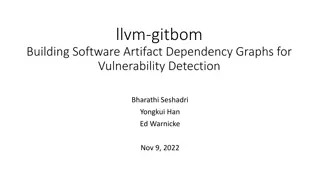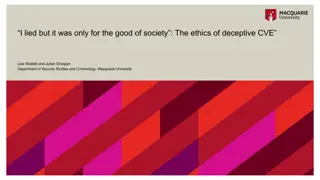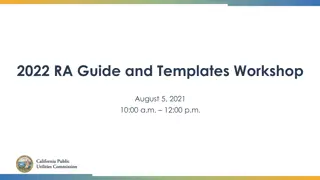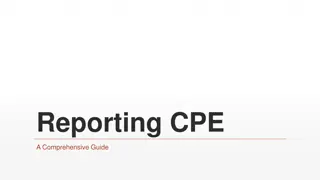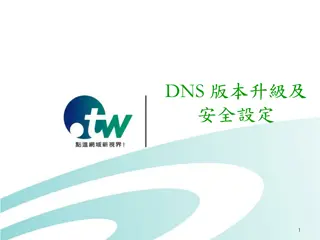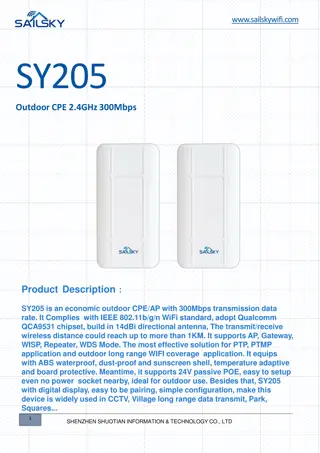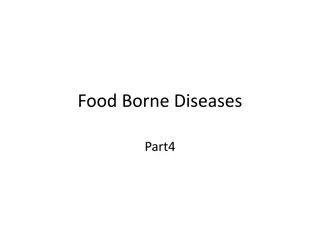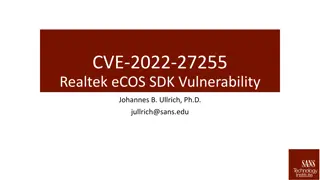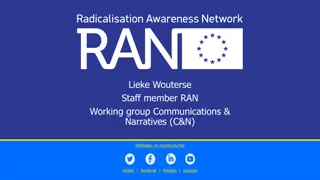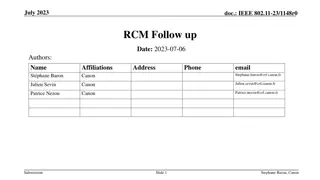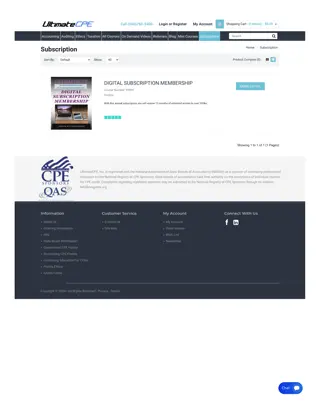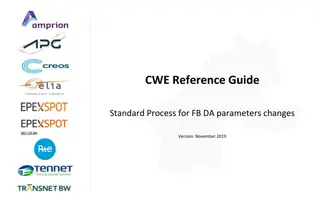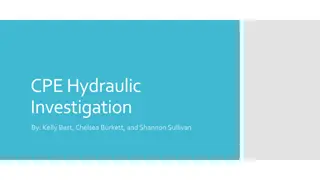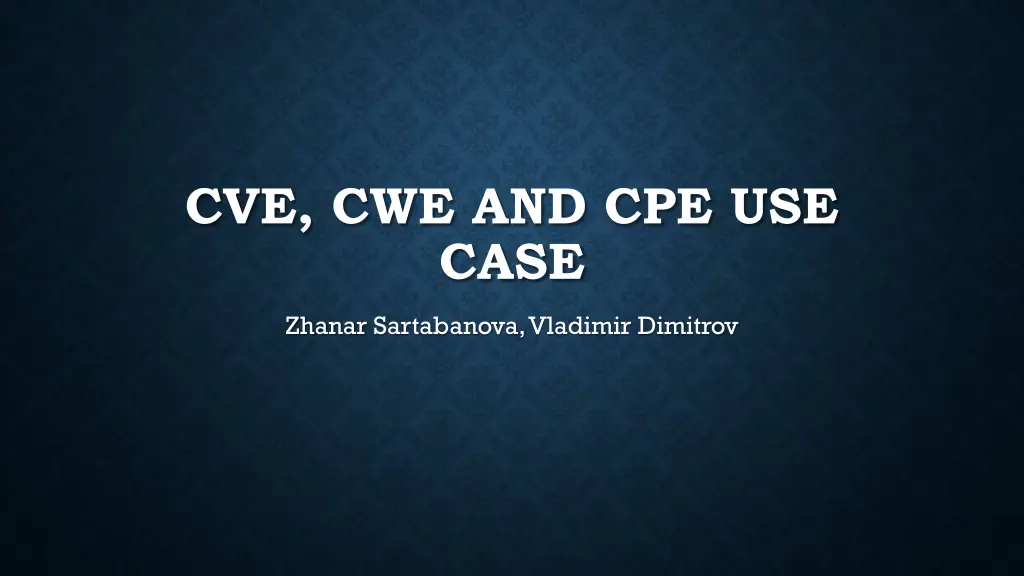
Understanding CVE, CWE, and CPE - Use Cases
Explore the use cases of CVE, CWE, and CPE in software vulnerability management. Learn about their definitions, importance, and application through real-world examples like Moodle. Understand how these databases help in identifying vulnerabilities to ensure software security.
Download Presentation

Please find below an Image/Link to download the presentation.
The content on the website is provided AS IS for your information and personal use only. It may not be sold, licensed, or shared on other websites without obtaining consent from the author. If you encounter any issues during the download, it is possible that the publisher has removed the file from their server.
You are allowed to download the files provided on this website for personal or commercial use, subject to the condition that they are used lawfully. All files are the property of their respective owners.
The content on the website is provided AS IS for your information and personal use only. It may not be sold, licensed, or shared on other websites without obtaining consent from the author.
E N D
Presentation Transcript
CVE, CWE AND CPE USE CASE Zhanar Sartabanova, Vladimir Dimitrov
CVE/NVD, CWE AND CPE 1/2 CVE (Vulnerabilities and Exposures) is a database supported by MITRE Corporation. It contains public known vulnerabilities with unique identifier, short description, and source references. NVD (National Vulnerability Database) is further elaborated by NIST subset of CVE. CPE (Common Platform Enumeration) is platform enumeration list supported by NIST for NVD. CWE (Common Weakness Enumeration) is hierarchical weakness taxonomy supported by MITRE Corporation.
CVE/NVD, CWE AND CPE 2/2 CVE project is open for all stakeholder parties. Here, every new vulnerability receives its identifier following strict open procedure. The last one is of several phases. For example, some vulnerabilities can be rejected as new ones. NIST extracts periodically from CVE all new accepted vulnerabilities and further elaborate them. For example, NIST adds CPE expression that matches platforms affected from the specific vulnerability and references applicable CWEs. CPE identifiers in the list are expressed in the same way as CPE expressions, but they are atomic meaning that there are no further platform subsets from CVE point of view. All vulnerabilities are weaknesses, but only vulnerabilities can be exploited (attacked). Some weaknesses in the software cannot be attacked and they are not vulnerabilities.
MOODLE USE CASE Moodle is a popular learning management system. It is a free software and can be downloaded from its site. Moodle as a software has its own vulnerabilities registered in CVE/NVD. In this use case, Moodle acquisition for use in a university is discussed. More specifically, security aspects of such an acquisition are investigated in this example. The last version of Moodle was 4.4.x, but more stable was 4.3.x.
IN NVD We started to search for vulnerabilities in NVD because it is the most elaborated database with useful information for software protection. There were no vulnerabilities registered in NVD for Moodle 4.4.x. It is normal because the last version just has been published. The search for Moodle 4.3.x showed only two vulnerabilities: CVE-2024-28593 and CVE-2023- 46858. Now, reasonable question is Are these two vulnerabilities still available in Moodle 4.4.x? . At that time, no one could answer this question. In that case, we accepted open world concept from AI, i.e. these two vulnerabilities were available in Moodle 4.4.x. Usually when a vulnerability has been registered in NVD with CPE expression, the last one expresses a set of closed on both sides platform ranges except in the case of last version as in the case. Simply, the last version still has not been elaborated and if some vulnerabilities have been available for the version before the last one we accept that they are also available in the last version.
IN CVE Next step is to search CVE database for Moodle 4.4.x. There is one vulnerabilities registered for Moodle 4.4.x: CVE-2024-38275. In Moodle 4.3.x, following above-mentioned assumption, there are six vulnerabilities CVE-2024-38275, CVE-2024-34005, CVE-2024-34004, CVE-2024-34003, CVE-2024- 34002, CVE-2024-28593.
CVE STATUS IN NVD Awaiting Analysis DESCRIPTION CWE CVE- 2024- 38275 The cURL wrapper in Moodle retained the original request headers when following redirects, so HTTP authorization header information could be unintentionally sent in requests to redirect URLs. CWE-226 IN CWE CVE- 2024- 34005 Awaiting Analysis In a shared hosting environment that has been misconfigured to allow access to other users' content, a Moodle user with both access to restore database activity modules and direct access to the web server outside of the Moodle webroot could execute a local file include. CWE-200 CVE- 2024- 34004 Awaiting Analysis In a shared hosting environment that has been misconfigured to allow access to other users' content, a Moodle user with both access to restore wiki modules and direct access to the web server outside of the Moodle webroot could execute a local file include. CWE-200 CVE- 2024- 34003 Awaiting Analysis In a shared hosting environment that has been misconfigured to allow access to other users' content, a Moodle user with both access to restore workshop modules and direct access to the web server outside of the Moodle webroot could execute a local file include. CWE-200 CVE- 2024- 34002 Awaiting Analysis In a shared hosting environment that has been misconfigured to allow access to other users' content, a Moodle user with both access to restore feedback modules and direct access to the web server outside of the Moodle webroot could execute a local file include. CWE-200 CVE- 2024- 28593 Awaiting Analysis The Chat activity in Moodle 4.3.3 allows students to insert a potentially unwanted HTML A element or IMG element, or HTML content that leads to a performance degradation. NOTE: the vendor's Using_Chat page says "If you know some HTML code, you can use it in your text to do things like insert images, play sounds or create different coloured and sized text." This page also says "Chat is due to be removed from standard Moodle." None
OBSERVATIONS ON CVE/NVD 1/2 Our first observation is that all CVEs are Awaiting Analysis . This means, that we have only short description and somehow mentioned CWEs. How helpful is that to protect our acquisition? Further investigations on CWEs have to be done. Second observation is that the last two version 4.4.x and 4.3.x are still under analyses. The analyses process in NVD is too slowly. Then another question arises How helpful is the analyses process for practitioners if the result have not come in time? .
OBSERVATIONS ON CVE/NVD 2/2 With CVE-2024-38275 nothing can be done at this time. Carefully investigating CVE-2024-34005 - CVE-2024-34002, we see that in all cases prerequisite for these vulnerabilities is Moodle user with both access to restore database activity / wiki / workshop / feedback modules and direct access to the web server outside of the Moodle webroot could execute a local file include. . This means that these vulnerabilities can be controlled not allowing both access rights to the same Moodle user. For CVE-2024-28593, it is mentioned that Moodle Chat is the problem and it will be removed in the future versions, but at this time Chat can be forbidden to students.
CWES There are only two CWEs: CWE-226: Sensitive Information in Resource Not Removed Before Reuse CWE-200: Exposure of Sensitive Information to an Unauthorized Actor CWE-226 is a Base weakness. This means that it can be detected by the scanners. Potential mitigations for CWE-226 can be done on phases Architecture and Design; Implementation. This is not useful for our case. CWE-200 is Class weakness. This means that it is very abstract and there are no specific methods to catch it. Potential mitigations for CWE-200 can be done on phase Architecture and Design. Again, this is not useful for our case.
FURTHER INVESTIGATIONS ON CWE 1/3 Where is possible in CWE to find some mitigations? CWEs are organized in hierarchy: Pilar, Category, Class, Base, and Variant. Only for Base and Variant, there are methods for detecting. Variant weaknesses are bounded to some product or technology, but Base weaknesses are not. A Base weakness can have as a child another Base weakness and a Variant weakness can have as a child another Variant weakness. Parent-child relationship in CWEs is a relationship from more common to more specific. It is normal Variant weakness as a child to be more specific than a Base weakness as its parent, but it is applicable for two Base (Variant) weaknesses in parent-child relationship. Therefore, we have to investigate CWE hierarchy to the root but not higher than the end of the Base level.
FURTHER INVESTIGATIONS ON CWE 2/3 Let us see what weaknesses stay above CWE-226. In CWE-1000: Research Concepts view, these are CWE-212 and CWE-459. CWE-212: Improper Removal of Sensitive Information Before Storage or Transfer is a child of Class CWE-669: Incorrect Resource Transfer Between Spheres in CWE-1000: Research Concepts view. CWE-459: Incomplete Cleanup is a child of Class CWE-404: Improper Resource Shutdown or Release.
FURTHER INVESTIGATIONS ON CWE 3/3 CVE-2024-38275 is not among vulnerability observed examples of CWE-226, CWE-212, CWE- 459, CWE-669, and CWE-404. It is may be because it is still not analyzed. Pillars are higher than a Class in CWE-1000: Research Concepts view. The last ones are not weaknesses but they are simply containers of weaknesses with common characteristics. CWE-225 participates in other views like CWE-1194: Hardware Design, but they are not relevant for our use case. Now let us investigate CWE-200. It is child of Class CWE-668: Exposure of Resource to Wrong Sphere in CWE-1000: Research Concepts view. None of our CVEs is observable example in CWE-200 predecessors.
OUTSIDE CVE/NVD Further investigations have to be done outside CVE/NVD following references to CVE sources as a by CVEs: CVE-2024-38275: https://moodle.org/mod/forum/discuss.php?d=459500 CVE-2024-34005: https://moodle.org/mod/forum/discuss.php?d=458394 CVE-2024-34004: https://moodle.org/mod/forum/discuss.php?d=458393 CVE-2024-34003: https://moodle.org/mod/forum/discuss.php?d=458391 CVE-2024-34002: https://moodle.org/mod/forum/discuss.php?d=458390 CVE-2024-28593: https://docs.moodle.org/403/en/Using_Chat https://gist.githubusercontent.com/minendie/4f23174687bc4d8eb7f727d9959b5399/raw/9ce573ce bcce5521d9d6f826ab68f3780036b874/CVE-2024-28593.txt https://medium.com/%40lamscun/how-do-i-change-htmli-from-low-to-critical-your-email-box-is- safe-e7171efd88fe
CVE CVE-2024-38275 Affected versions 4.4, 4.3 to 4.3.4, 4.2 to 4.2.7, 4.1 to 4.1.10 and earlier unsupported versions Fixed versions 4.4.1, 4.3.5, 4.2.8 and 4.1.11. CVE-2024-34005 4.0 to 4.3.3, 4.2 to 4.2.6, 4.1 to 4.1.9 and earlier unsupported versions 4.3.4, 4.2.7 and 4.1.10 CVE-2024-34004 4.0 to 4.3.3, 4.2 to 4.2.6, 4.1 to 4.1.9 and earlier unsupported versions 4.3.4, 4.2.7 and 4.1.10 CVE-2024-34003 4.0 to 4.3.3, 4.2 to 4.2.6, 4.1 to 4.1.9 and earlier unsupported versions 4.3.4, 4.2.7 and 4.1.10 CVE-2024-34002 4.0 to 4.3.3, 4.2 to 4.2.6, 4.1 to 4.1.9 and earlier unsupported versions 4.3.4, 4.2.7 and 4.1.10 CVE-2024-28593 None None
PRELIMINARY OBSERVATION The good news is that CVE-2024-38275 in Moodle 4.4.1 is fixed. For other CVEs we have mentioned above how can be mitigated. Still it is not clear are they fixed not for Moodle 4.4.1. Therefore, Moodle 4.4.1 is suitable for acquisition.
MOODLE SECURITY ANNOUNCEMENTS Moodle.org supports announcements for security issues. There are referenced vulnerabilities for versions 4.4.x and 4.3.x in MSA-24-0050 - MSA- 24-0045. CVE-2024-38277 - CVE-2024-38273, CVE-2024-34009 - CVE-2024-33996, and CVE- 2024-25983 - CVE-2024-25978 are only registered. Now, let us focus on Moodle 4.4.4, by this report checking the fields Affected versions and Fixed versions (MSA-24-0050 - MSA-24-0045), it follows that this version has no vulnerabilities.
CONCLUSIONS 1/2 First, we have to mention that not all possible external sources for security information about Moodle have been investigated. Second, Moodle supports security by design process and a process for informing its user community about security issues. That is not the case for many vendors. Third, analyzing Moodle Security Announcements we accepted that information in the field Affected versions is true, i.e. if the newest version 4.4.4 is not mentioned there it is not affected.
CONCLUSIONS 2/2 In this use case several conclusions can be done: 1. CVE/NVD vulnerability registration lasts 1-2 year after the initial vulnerability report by the vendor. 2. Some vulnerabilities have been removed in the newer Moodle versions before even CVE publishes them. Simplest security solution in this case is to upgrade Moodle every time when it is possible. This use case is only one; more investigations on that topic with different use cases have to be done to do conclusions that are more precise.

